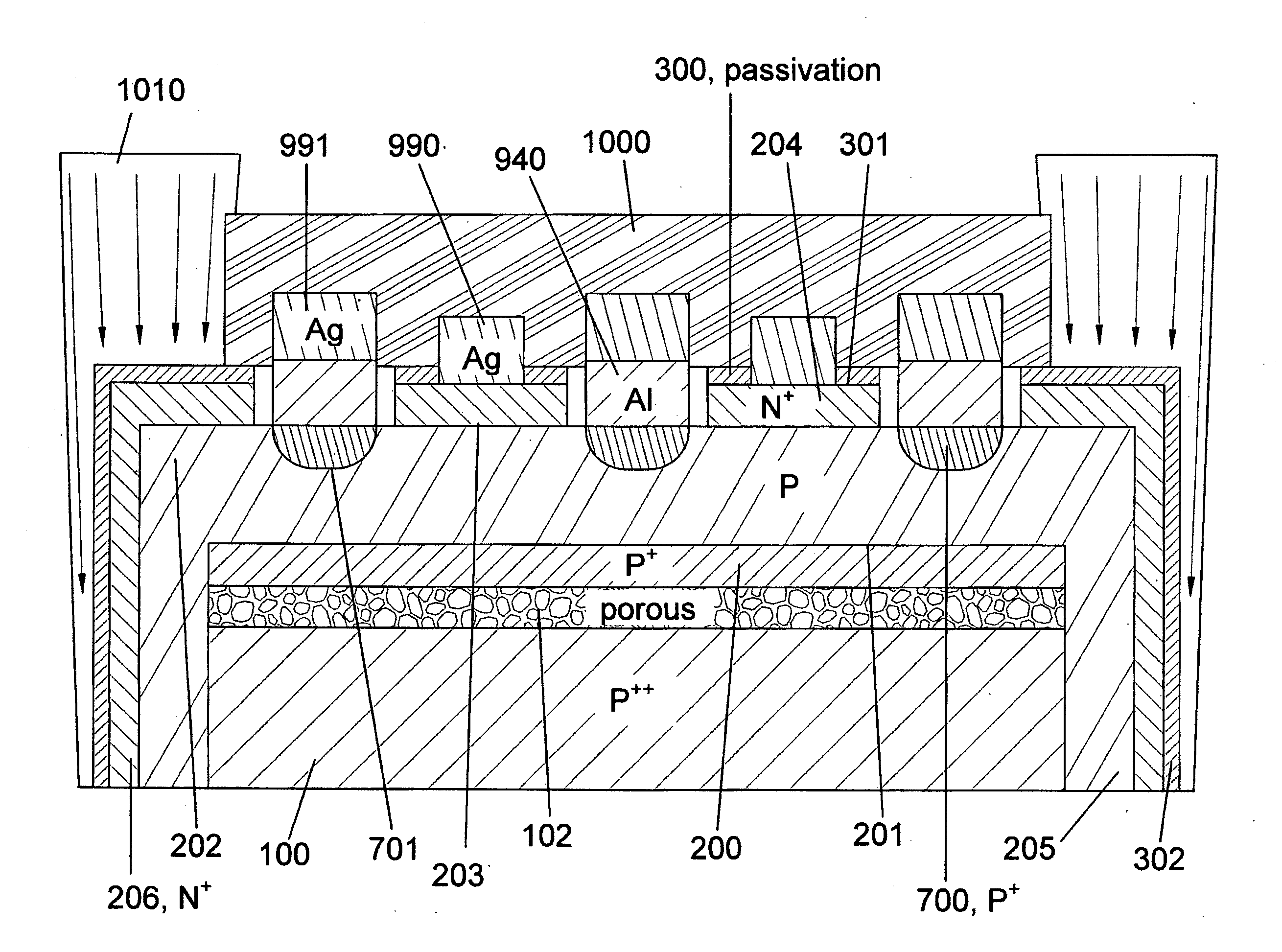Thin Interdigitated Backside Contact Solar Cell and Manufacturing Process Thereof
a solar cell and backside technology, applied in the field of solar cell manufacturing, can solve the problems of increasing materials costs, increasing materials costs, and inability to meet the requirements of a large number of processing steps, and achieves the effects of reducing the cost of pv cell manufacturing, high materials quality, and better control of dopant profiles
- Summary
- Abstract
- Description
- Claims
- Application Information
AI Technical Summary
Benefits of technology
Problems solved by technology
Method used
Image
Examples
Embodiment Construction
[0052]FIGS. 1 to 28 illustrate the steps in one embodiment of the fabrication process for a thin photovoltaic cell having interdigitated backside connections. Most figures are schematic side cross-sectional views in which the vertical dimensions are greatly enlarged relative to the horizontal dimensions. Note that this lack of scaling makes the profiles of the isotropic etch steps appear as vertical lines, since any undercutting occurring during the etch process cannot be seen when the vertical scale is greatly enlarged.
[0053]FIG. 1 is a schematic side cross-sectional view of a silicon wafer 100 with a thin porous silicon layer 102 at its upper principal surface. The wafer 100 may typically be P++ boron-doped silicon with a resistivity in the range 0.01 to 0.005 ohm-cm. The tipper portion of the wafer 100 is made porous by using an anodic etching process, for example, using hydrofluoric acid (HF) as the electrolyte, as described in FIG. 9 of U.S. Provisional Patent Application Ser. ...
PUM
| Property | Measurement | Unit |
|---|---|---|
| thickness | aaaaa | aaaaa |
| thicknesses | aaaaa | aaaaa |
| thick | aaaaa | aaaaa |
Abstract
Description
Claims
Application Information
 Login to View More
Login to View More - R&D
- Intellectual Property
- Life Sciences
- Materials
- Tech Scout
- Unparalleled Data Quality
- Higher Quality Content
- 60% Fewer Hallucinations
Browse by: Latest US Patents, China's latest patents, Technical Efficacy Thesaurus, Application Domain, Technology Topic, Popular Technical Reports.
© 2025 PatSnap. All rights reserved.Legal|Privacy policy|Modern Slavery Act Transparency Statement|Sitemap|About US| Contact US: help@patsnap.com



